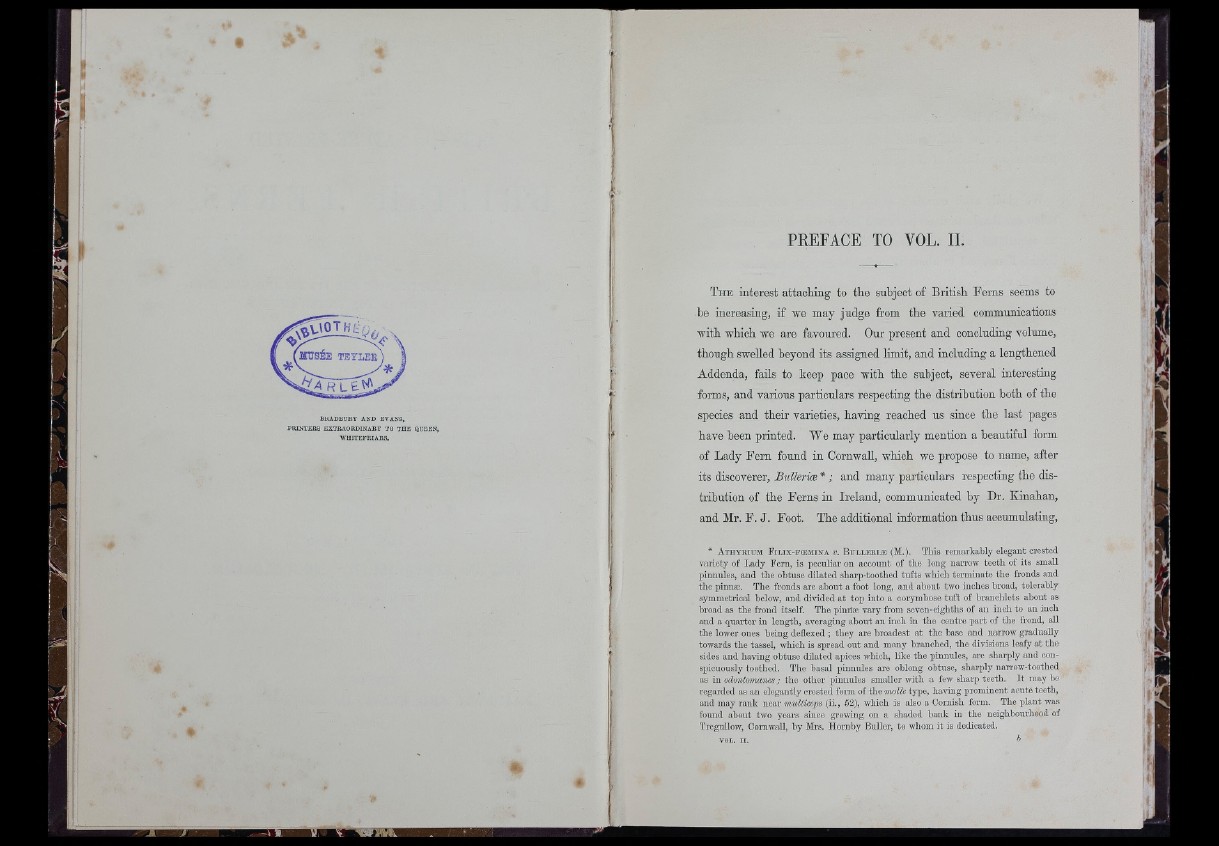
BUADBURY AND EVANS,
PRINTERS EXTRAORDINARY TO THE QUEEN,
WUITEKRIARS.
PREFACE TO VOL. II.
T h e interest attaching to the subject of British Ferns seems to
he increasing, if we may judge from the varied communications
with which we are favoured. Our present and concluding volume,
though swelled beyond its assigned limit, and including a lengthened
Addenda, fails to keep pace with the subject, several interesting
forms, and various particulars respecting the distribution both of the
species and their varieties, having reached us since the last pages
have been printed. We may particularly mention a beautiful iovm
of Lady Fern found in Cornwall, which we propose to name, after
its discoverer, Bnllerice * ; and many particulars respecting the distribution
of the Ferns in Ireland, communicated by Dr. Kinahan,
and Mr. F. J, Foot. The additional information thus accumulating,
* A th y k ium Filix -fo sm in a-y . BuLLERiiE (M.). This remarkably elegant crested
variety of Lady Fern, is peculiar on account of th e long narrow te e th of its small
pinnules, and th e obtuse dilated sharp-toothed tu fts which terminate th e fronds and
th e pimiffi. The fronds are about a foot long, and about two inches broad, tolerably
symmetrical below, and divided a t to p into a corymbose tu ft of branchlets about as
broad as th e frond itself. The pinila?. vary from seven-eighths of an inch to an inch
and a qu arter in length, averaging about an inch in th e centre p a rt of th e frond, all
th e lower ones being deflexed ; th ey are broadest a t th e base and narrow gradually
towards the tassel, which is spread out and many branched, th e divisions leafy a t th e
sides an d having obtuse dilated apices which, like th e pinnules, are sharply and conspicuously
toothed. The basal pinnules are oblong obtuse, sharply narrow-toothed
as m odontomanes; th e other pinnules smaller with a few sharp teeth. I t m a y b e
regarded as an elegantly crested form of th e molU type, having prominent acute teeth,
and may ran k near 7rLulticcps (ii., 52), which is also a Cornish form. The plan t was
found about two years since growing on a shaded bank in th e neighbourhood of
TreguUow, Cornwall, by Mrs. Hornby Buller, to whom it is dedicated.
VOL. I I . ^
c ’T
H
I